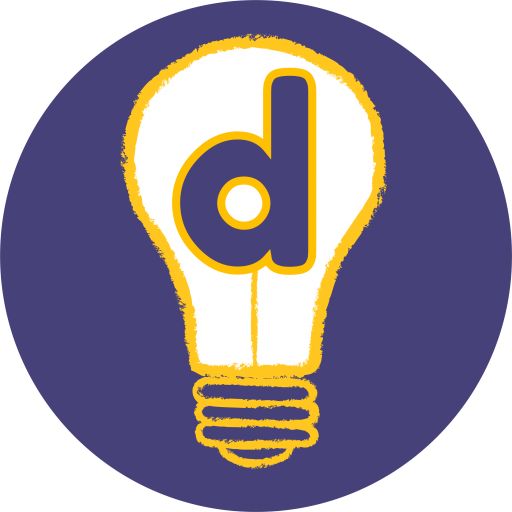Your blood pressure is normal at home, but the moment that well-meaning medical professional wraps that cuff around your arm, it spikes. The act of measuring creates the very problem it’s trying to manage.
This isn’t unique to medical settings.
Your training programmes tick every compliance box, your completion rates are high, and your post-course evaluations consistently show positive feedback. Yet when those same employees return to their desks, something fundamental is missing. They struggle with client conversations they’ve never encountered before. They freeze when stakeholder priorities conflict. They can recite the frameworks but can’t read the room. They’re not workplace-ready.
The 5% problem
Recent research reveals this contradiction starkly. LinkedIn’s 2024 Workplace Learning Report found that fewer than 5% of major reskilling initiatives advance far enough to measure success, whilst separate studies show 79% of business leaders say new talent still arrives unprepared for workplace realities. When surveyed, only 27% of employees feel confident they can demonstrate essential capabilities when it matters most.
Not only is this a colossal waste of time and money, it demonstrates a fundamental mismatch between how we develop capabilities and how those capabilities actually get used in the real world.

The invisible barrier
The issue lies in what happens when we try to make complex workplace skills teachable at scale. To create consistent, measurable programmes, learning teams naturally break down sophisticated capabilities into manageable components. “Effective stakeholder management” becomes a framework with clear steps. “Strategic thinking” gets reduced to a methodology with reproducible processes.
There’s nothing wrong with these frameworks—they’re accurate, evidence-based, and logical. But they represent knowledge once-removed from the messy, high-stakes situations where employees actually need to apply them. They don’t deliver workplace-ready talent.
Consider the difference between knowing that “active listening involves maintaining eye contact and asking clarifying questions” and actually navigating a heated budget meeting where three departments have conflicting priorities and the CFO is clearly losing patience. The framework provides the foundation, but the real capability emerges through practising judgment under pressure.
This explains why traditional training often produces what we might call “competent beginners”—people who understand the principles but struggle with the improvisation that workplace effectiveness demands.
The fiction solution
The most effective solution lies in an unexpected place: the power of realistic workplace fiction.
When employees engage with carefully crafted scenarios featuring fictional colleagues facing authentic challenges, something remarkable happens. They stop trying to demonstrate their competence and start simply solving problems. The psychological distance created by fiction paradoxically allows for deeper engagement with real workplace dynamics.
Data analysis training provider IO-Sphere recognised that whilst many courses taught technical data skills effectively, graduates still struggled to apply this knowledge in real workplace contexts. They could analyse data but couldn’t navigate stakeholder conversations, create compelling narratives from their findings, or influence decision-makers effectively.
The solution? We helped them develop a fictional e-commerce company and stakeholders to reframe ‘teaching’ as ‘engagement in realistic scenarios’. Rather than abstract case studies, participants followed data analysts navigating genuine workplace challenges—conflicting stakeholder demands, incomplete briefs that changed mid-project, and the politics of presenting findings that contradicted senior expectations.
Instead of learning about stakeholder management in theory, participants found themselves actually managing fictional stakeholders with distinct personalities and agendas. They developed the confidence to present complex findings clearly, learned to read room dynamics, and gained practical experience in the soft skills that determine whether technical expertise translates into business impact. The programme now successfully converts novices into workplace-ready data professionals in just 14 weeks.
Why fiction works where facts fail
Fictional scenarios succeed because they eliminate the performance anxiety that traditional training often creates. When employees know they’re helping fictional characters navigate challenges, they engage objectively rather than defensively. There’s no fear of “getting it wrong” because they’re not being evaluated—they’re simply solving interesting problems.
This psychological safety allows the sophisticated judgment that employers actually value to emerge naturally. Instead of following predetermined frameworks, employees demonstrate the adaptive expertise that distinguishes high performers from merely competent ones.
The approach also preserves the complexity that makes workplace challenges genuinely challenging. Unlike simplified case studies, fictional scenarios can include all the messiness of real organisational life—conflicting stakeholder interests, incomplete information, shifting priorities, and political dynamics—without overwhelming participants with actual consequences.

The strategic advantage
The organisations we’ve worked with who have implemented scenario-based training report measurable improvements in exactly the capabilities that traditional training struggles to develop: handling ambiguity, adapting communication styles for different stakeholders, making ethical decisions under pressure, and building strategic relationships across hierarchical boundaries.
Perhaps most significantly, these capabilities transfer immediately to real workplace situations because they’ve been developed through realistic practice rather than theoretical instruction.
For senior managers facing pressure to demonstrate ROI on training investment, scenario-based learning offers a pathway from measuring satisfaction scores to measuring actual workplace effectiveness. When employees can navigate complex challenges because they’ve practised similar situations in safe environments, the business impact becomes immediately visible.
The measurement paradox dissolves when learning experiences develop genuine capability rather than just theoretical knowledge. Your training investment finally delivers what it promises: employees who don’t just know what to do, but can actually do it when it matters most.

You might also like:
- Ding’s Learning Design Almanac provides practical solutions to real-world learning challenges. No theoretical padding—just essential techniques that work when you need them to.
- The Ding Blog shares fresh perspectives on educational practice. We cut through the noise to focus on what actually makes learning experiences engaging and effective.
- The Ding-O-Meter Podcast features honest conversations with learning professionals. Real discussions about the messy realities of creating meaningful education, with insights you can apply immediately.
- JUICE (Journal of Useful Investigations in Creative Education) does exactly what its name suggests—extracts the essential oil from academic research. We squeeze complex studies until the practical wisdom separates out.
Want to become a qualified learning designer?
We run a PGCert, PGDip and MA in Creative Teaching and Learning Design.



